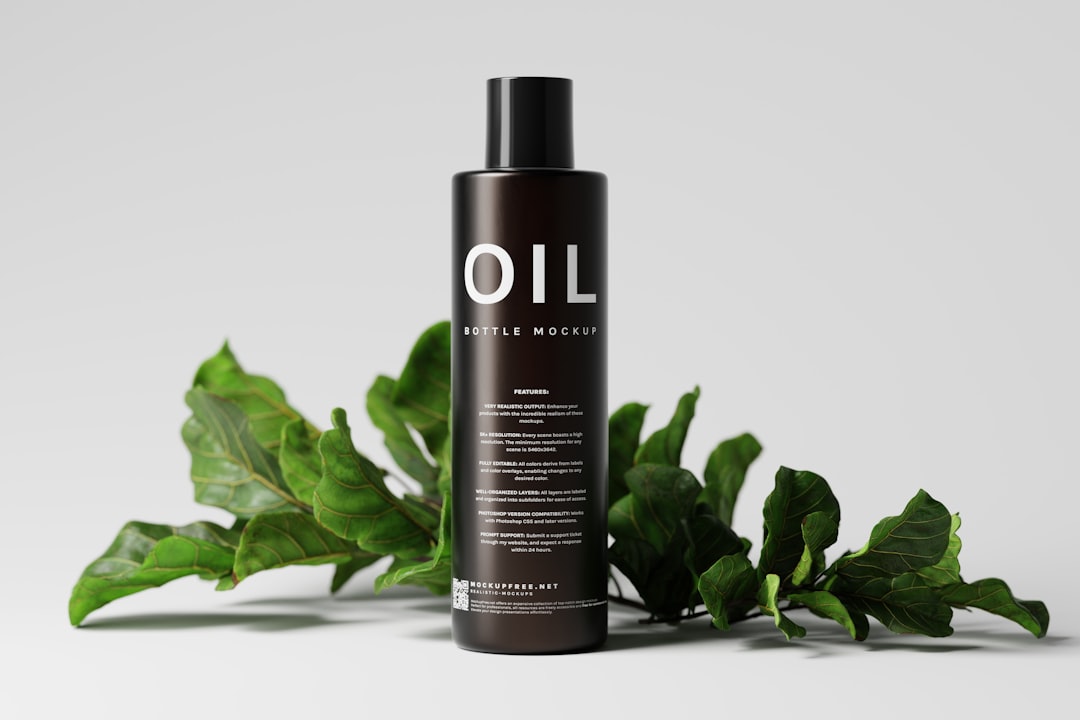In recent years, there has been a significant rise in the popularity of homemade skincare treatments. With the increasing awareness of the potential harmful effects of chemicals and synthetic ingredients in commercial skincare products, many people are turning to natural and homemade alternatives. This trend is driven by a desire for healthier, more sustainable skincare options that are also cost-effective. Homemade skincare treatments often involve the use of natural ingredients such as fruits, vegetables, oils, and herbs, which are believed to be gentler on the skin and have fewer negative environmental impacts. Additionally, the DIY skincare movement has been fueled by the accessibility of information and recipes online, making it easier for individuals to create their own skincare products at home. As more people seek to reduce their environmental footprint and embrace a more sustainable lifestyle, homemade skincare treatments have become a popular choice for those looking to take control of what they put on their skin.
The appeal of homemade skincare treatments lies in the ability to customize products to suit individual skin types and preferences. By using natural ingredients, individuals can avoid the potentially harmful chemicals found in many commercial skincare products. Furthermore, homemade skincare treatments are often more affordable than their commercial counterparts, as they can be made using ingredients that are readily available in most kitchens. This has made natural skincare accessible to a wider audience, allowing people to take a more active role in caring for their skin without breaking the bank. The rise of homemade skincare treatments reflects a growing shift towards sustainability and conscious consumerism, as individuals seek to reduce their environmental impact while prioritizing their health and well-being. As the demand for natural and eco-friendly skincare options continues to grow, it is important to consider the environmental impact of both homemade and commercial skincare products to make informed choices for sustainable skincare.
The Environmental Impact of Commercial Skincare Products
Commercial skincare products have a significant environmental impact throughout their lifecycle, from production to disposal. The production of these products often involves the extraction and processing of natural resources, such as water, minerals, and plant-based ingredients, which can contribute to habitat destruction and biodiversity loss. Additionally, the manufacturing process typically requires large amounts of energy and water, leading to greenhouse gas emissions and water pollution. Furthermore, the packaging of commercial skincare products often involves the use of plastic and other non-biodegradable materials, contributing to the global plastic pollution crisis. Once these products are used and disposed of, they can end up in landfills or waterways, further exacerbating environmental degradation.
Moreover, many commercial skincare products contain synthetic chemicals and preservatives that can have negative impacts on ecosystems and wildlife when they are washed down the drain. These chemicals can accumulate in water bodies, affecting aquatic life and potentially entering the food chain. The widespread use of microplastics in exfoliating scrubs and other skincare products has also raised concerns about their impact on marine environments. As consumers become more aware of these environmental issues, there is a growing demand for sustainable alternatives to commercial skincare products that minimize harm to the planet.
The Environmental Impact of Homemade Skincare Treatments
While homemade skincare treatments are often perceived as more environmentally friendly than commercial products, they are not without their own potential impacts. The cultivation and harvesting of natural ingredients for homemade skincare treatments can still have environmental consequences, particularly if they are not sourced sustainably. For example, the overharvesting of certain plant species for their cosmetic properties can lead to habitat destruction and threaten biodiversity. Additionally, the transportation of ingredients from different regions or countries can contribute to carbon emissions and air pollution.
Furthermore, the disposal of waste from homemade skincare production, such as leftover ingredients and packaging materials, can also have environmental implications if not managed responsibly. While homemade skincare treatments may use less packaging overall, it is important for individuals to consider the environmental impact of the materials they do use and strive to minimize waste wherever possible. Despite these potential impacts, homemade skincare treatments still offer the opportunity for individuals to reduce their reliance on commercial products with harmful chemicals and excessive packaging. By sourcing ingredients responsibly and being mindful of waste generation, homemade skincare enthusiasts can take steps to mitigate their environmental footprint.
Packaging and Waste: Commercial vs. Homemade Skincare Products
The packaging of commercial skincare products is a major contributor to environmental waste and pollution. Many skincare items come in single-use plastic containers that end up in landfills or oceans after use. Additionally, the production of these containers requires significant amounts of energy and resources, further contributing to environmental degradation. On the other hand, homemade skincare treatments often involve minimal packaging or the use of reusable containers, reducing the overall waste generated. By repurposing existing containers or using biodegradable packaging materials, individuals can significantly reduce their environmental impact when creating their own skincare products at home.
Moreover, the production of commercial skincare products often involves excessive packaging and marketing materials that contribute to waste generation. From outer boxes to promotional inserts, these additional materials are often unnecessary and end up being discarded by consumers. In contrast, homemade skincare treatments allow individuals to create products in small batches as needed, reducing the need for excessive packaging and marketing materials. By embracing a more minimalist approach to skincare production, individuals can play a part in reducing waste and promoting sustainable practices.
Chemicals and Ingredients: Commercial vs. Homemade Skincare Products
Commercial skincare products often contain a wide range of synthetic chemicals and preservatives that can have negative impacts on both human health and the environment. Many of these chemicals have been linked to skin irritation, allergies, hormone disruption, and even long-term health effects. Furthermore, when these products are washed down the drain, these chemicals can accumulate in water bodies and pose risks to aquatic ecosystems. In contrast, homemade skincare treatments typically use natural ingredients such as oils, herbs, and essential oils that are believed to be gentler on the skin and less harmful to the environment.
Additionally, the cultivation and extraction of natural ingredients for homemade skincare treatments can be done in a more sustainable manner compared to the industrial production of synthetic chemicals for commercial products. By sourcing organic and ethically harvested ingredients, individuals can support environmentally friendly practices while creating their own skincare products at home. This shift towards natural ingredients not only benefits individual health but also reduces the overall environmental impact associated with skincare production.
Transportation and Carbon Footprint: Commercial vs. Homemade Skincare Products
The transportation of ingredients and finished products is a significant contributor to the carbon footprint of commercial skincare items. Many ingredients are sourced from different regions or countries before being processed and manufactured into final products, leading to high levels of energy consumption and greenhouse gas emissions from transportation. Additionally, the global distribution of these products further increases their carbon footprint as they are shipped to retailers around the world.
In contrast, homemade skincare treatments often involve sourcing ingredients locally or using items that are already available in the home, reducing the need for long-distance transportation. By supporting local producers and using seasonal ingredients, individuals can significantly reduce the carbon footprint associated with their skincare routines. Furthermore, creating skincare products at home eliminates the need for additional transportation from manufacturers to retailers, further reducing carbon emissions associated with distribution.
Making Informed Choices for Sustainable Skincare
As consumers become increasingly conscious of their environmental impact, there is a growing demand for sustainable skincare options that prioritize both personal health and planetary well-being. The rise of homemade skincare treatments reflects a shift towards natural, eco-friendly alternatives that allow individuals to take control of what they put on their skin while minimising harm to the environment. While both commercial and homemade skincare products have their own environmental implications, it is important for consumers to make informed choices that align with their values and sustainability goals.
By considering factors such as packaging and waste generation, chemical ingredients, and transportation emissions, individuals can evaluate the environmental impact of their skincare choices and make adjustments where necessary. Whether it’s opting for minimal packaging, choosing natural ingredients over synthetic chemicals or supporting local producers, there are numerous ways for consumers to reduce their environmental footprint when it comes to skincare. Ultimately, by embracing homemade skincare treatments or selecting sustainable commercial options, individuals can play a part in promoting a healthier planet while caring for their skin in a more conscious manner.
If you’re interested in exploring the differences between morning and night skincare routines, you should check out the article on Morning vs Night Skincare Routines: What’s the Difference? This article delves into the specific products and techniques that are best suited for each time of day, helping you to create a comprehensive skincare routine.
FAQs
What are the environmental impacts of homemade skincare treatments?
Homemade skincare treatments generally have a lower environmental impact compared to commercial products. This is because they often use natural and organic ingredients that are less harmful to the environment. Additionally, homemade treatments reduce the need for packaging and transportation, further reducing their environmental footprint.
What are the environmental impacts of commercial skincare products?
Commercial skincare products often have a higher environmental impact compared to homemade treatments. This is due to the use of synthetic chemicals, preservatives, and packaging materials that can be harmful to the environment. Additionally, the production and transportation of commercial products contribute to carbon emissions and pollution.
How do homemade skincare treatments reduce environmental impact?
Homemade skincare treatments reduce environmental impact by using natural and organic ingredients that are less harmful to the environment. They also reduce the need for packaging and transportation, which further minimises their environmental footprint.
What are some environmentally friendly alternatives to commercial skincare products?
Some environmentally friendly alternatives to commercial skincare products include homemade treatments using natural and organic ingredients, as well as purchasing skincare products from brands that prioritise sustainability and eco-friendly packaging.
Are there any specific ingredients in commercial skincare products that have a particularly high environmental impact?
Some ingredients in commercial skincare products, such as microbeads, certain preservatives, and synthetic chemicals, can have a particularly high environmental impact. These ingredients can contribute to water pollution and harm marine life.
How can consumers reduce the environmental impact of their skincare routine?
Consumers can reduce the environmental impact of their skincare routine by opting for homemade treatments using natural and organic ingredients, choosing skincare products from sustainable and eco-friendly brands, and minimising packaging waste by purchasing products with minimal or recyclable packaging.




